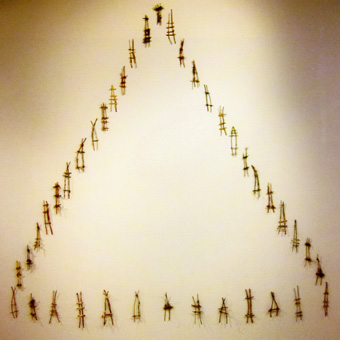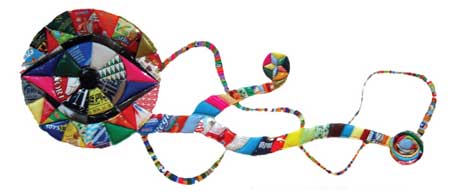Our Museum
 The Women’s Museum is an independent, non-profit project undertaken by Lucero Gonzalez after she received an award from the “Mexican Women’s Rights Society Seeds,” for her work and leadership skills in creating Seeds. This feminist fund is designed to finance women’s projects to achieve social change from a human rights perspective.
The Women’s Museum is an independent, non-profit project undertaken by Lucero Gonzalez after she received an award from the “Mexican Women’s Rights Society Seeds,” for her work and leadership skills in creating Seeds. This feminist fund is designed to finance women’s projects to achieve social change from a human rights perspective.
Mission: to pay tribute to Mexican Women in Visual Art from the 20th century onwards.
Vision: to expand the horizon of the various expressions of Mexican women artists, and promote reflection and dialogue on art, thereby building bridges with initiatives in other parts of the world.
Principles: to acknowledge the value of these artists and their contribution to constructing cultural diversity, and encourage respect towards all persons, free of discrimination related to age, religion, sexual preference, race or social class.
The MUMA Advisory Council is composed of:
| Angélica Abelleyra | Journalist | |
| Carla Rippey | Visual Artist | |
| Grace Quintanilla † | Videographer | |
| Helen Escobedo † | Visual Artist | |
| Karen Cordero | Art Historian | |
| Lorena Wolffer | Artist and Cultural Activist | |
| Lucero González | Visual Artist | |
| Magali Lara | Visual Artist | |
| Marta Palau | Visual Artist | |
| Mónica Mayer | Feminist Artist | |
| Pilar García | Art Historian and Curator | |
| Tania Aedo | Cultural Producer |
Our Museum
Karen Cordero

Why a museum of women artists? And why a museum specialized in Mexican women artists? At a time when it could be considered that the feminist debates and vindications initiated in the 1970’s are no longer relevant, we face the danger of “reinventing the wheel”, if we are not aware of what has been done, and the ways in the corporeal, creative and quotidian experiences of women are interwoven.
The recognition of the role of women artists in the history of art, and their distinctive and vigorous presence in contemporary art, as well as the actions, the reflections and the theoretical, visual and narrative constructions that these processes have generated, have transformed the content, the interpretative models, the categories of analysis and the definition of the field of visual art. In addition, they continue to generate new initiatives, provoking re-readings of the past from the perspective of gender, questioning the binary construction of sexual difference, and exploring the consequences of its dismantling.
Feminism, the motor behind this process, has changed and expanded its scope and proposals throughout this period; it is neither a singular nor a dogmatic position, but rather a variety of strategies focused on the reconfiguration of gender and power relations in diverse contexts and on numerous levels. With respect to art and its history, its influence has moved from the expansion of the canon, to the development of new methods and categories of analysis for art through its attention to the role of gender in creation and reception, and on to the experimentation with new ways of writing and inscribing meaning from a perspective of difference and through its challenge to a dichotomous conception of subjectivity and objectivity.
Art is a privileged zone for reflection on these topics, since its perception involves us in a transition between representations that pursue objectivity and subjective experience, generating a conceptual and sensorial process in which binary definitions of gender are momentarily suspended, in a state of imbricated consciousness rooted in the body and the senses.
Both written texts and museology offer vehicles for conceptual and spatial ordering and juxtaposition, in order to endow these experiences with a more precise meaning through the intentional articulation of relationships between words and objects. But at the same time they open up spaces for reflection, interpretation and personal reconstruction of conventional narratives and categories, from the standpoint of the body and consciousness of each spectator, and in a fluid dialogue with both personal and social horizons of expectation.
In Mexico, up to now, the resources available with respect to the history of feminist incursions in art, in terms of theory, action and their consequences for creation and interpretation, have been few and fragmentary. While there have been some initiatives of virtual museums that include Mexican women artists, none of them has been characterized by an integral conception that includes visual and verbal documentation, together with interpretative elements such as exhibitions and theoretical essays. It is in this context that MUMA, a Museum of Mexican Women Artists, seeks to provide its users with visual, textual and interactive elements that facilitate knowledge and exploration in this historical and contemporary field, providing access to documentation on works of art, writings and exhibitions, together with the possibility of experiencing different virtual museological constructions of the relationships between these elements. In this way, MUMA seeks to motivate a broader and more productive dialogue on the subject of art and gender in Mexico, enriching its components with additional visual and verbal elements, and establishing links with other sites related to this topic.